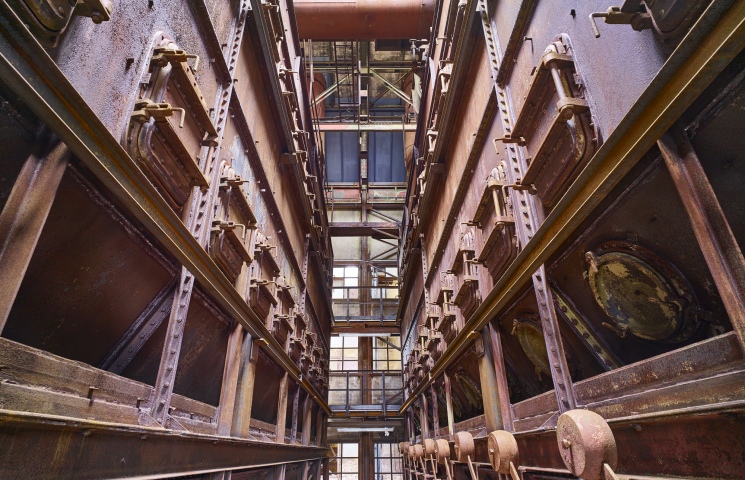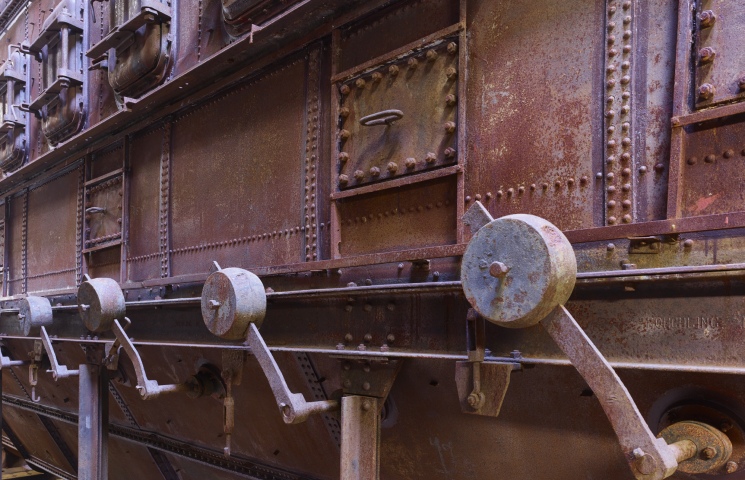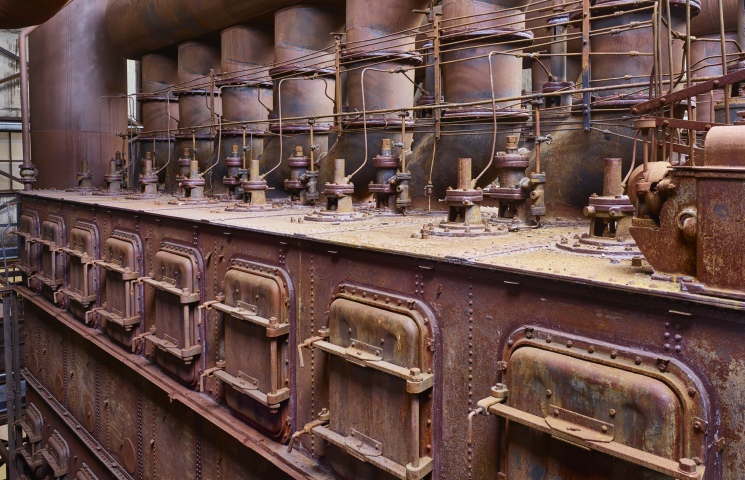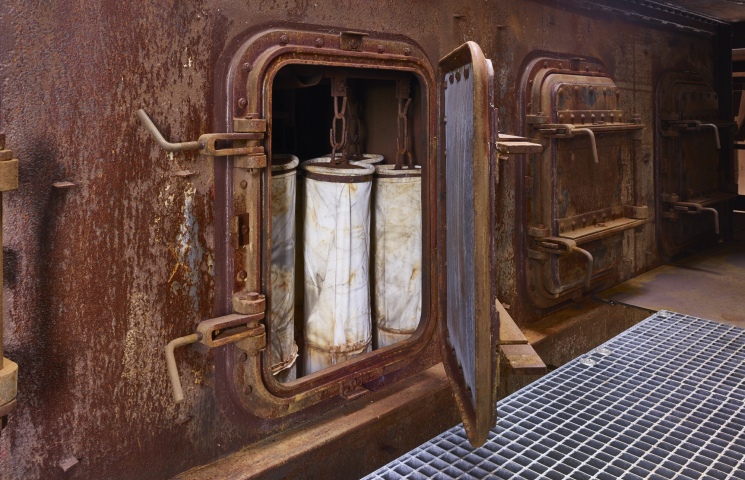Dry Gas Purification Plants
Dry Gas Purification Plants
Dry gas purification plants I, II and III
Years of construction:
Dry gas purification plant I: 1911/1912
Dry gas purification plant II: 1913/1917
Dry gas purification plant III: 1922-1926
In operation: 75 years until the works were shut down
The operating function of the plant was to purify the exhaust gases from the blast furnaces. Up to 381,000 cubic metres of furnace gas could be purified in an hour, i.e. almost four times the volume of the gasometer at Saarstahl AG. The purified gas could be reused as fuel in many ways: to drive blower machines and dynamos, for wind heating, in the sinter plant and in the coking plant. The filtered dust was either processed in the sinter plant and fed back into the smelting or processed as an aggregate in the neighbouring cement factory.
The construction of the three dry gas purification plants in Völklingen proved the success of the technology, new at the time and totally untried, of furnace gas purification using the Halberg-Beth method. The three plants with their time intervals, conversions and extensions were testimony to the further development of furnace gas purification at the Völklingen Ironworks. The fact that they remained in continuous operation until the closure of the works in 1986 also testifies to the longevity of this technology. The Halberg-Beth system of dry gas purification was used worldwide in the 1910s and 1920s, but was then replaced by more modern processes.




